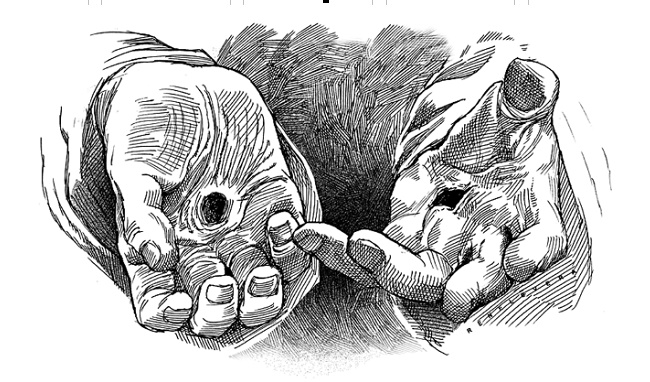
Each time we were together, I would shun any discussion with him, especially on politics or ideology.
At one time, my brother, not one to retreat from an argument, took him on and had to endure two or three hours of verbal tussle, while I just kept my peace and took my snack.
If the colleague had a dog, he must have agonized over what to call it, having to choose between Socrates and Descartes (two legendary skeptics, who, however, used doubt as a tool to know, and not to wear the opponent down).
Doubt, I grant, has its uses — especially in scientific inquiry. But that doubt must be reasonable and should end when overturned by facts. Otherwise the mind would ever be in retirement. As Henri Poincaré remarked, “To doubt everything and to believe everything are two equally convenient solutions; each saves us from thinking.”
Positive doubt was what the apostle Thomas had. John writes in his Gospel that, on the evening of the day of his Resurrection, Jesus appeared to his disciples who, for fear of the Jews, had stayed behind locked doors.
“Peace be with you,” he said, and then showed the wounds on his hands and side to the rejoicing disciples. Again he said, “Peace be with you,” and added, “As the Father has sent me, so I send you. He breathed on them and said, “Receive the Holy Spirit. Whose sins you forgive are forgiven them, and whose sins you retain are retained.”
Thomas was elsewhere all this time. When the others told him about it, he said, “Unless I see the mark of the nails in his hands and put my finger into the nailmarks and put my hand into his side, I will not believe.”
A week later, Jesus appeared again and told Thomas, “Put your finger here and see my hands, and bring your hand and put it into my side, and do not be unbelieving, but believe.” Thomas exclaimed, “My Lord and my God!” And Jesus said to him, “Have you come to believe because you have seen me? Blessed are those who have not seen and have believed.”
Because of the incident, Thomas gained the moniker “Doubting Thomas.” While Jesus seemed to chide him for believing only after he had seen, thereby stressing the advantage of faith despite the lack of physical evidence, he was nonetheless willing to show Thomas his wounds and let him feel them.
In fact, there was nothing wrong with Thomas’ doubt.
A healthy skepticism is natural, and may even be required by circumstances. One should not be ready to believe things and must wait for a sufficient basis before accepting the truth of what is said. In the case of Thomas, if there was a lapse at all, it lay in his not taking the other apostles at their word.
But could it be that Thomas’ elation over the rising of Christ was so great that his statement sounded incredulous, one made for dramatic effect?
All the same, Jesus took Thomas’ words literally and offered the wounds in his hands and side for him to put his finger in.
Of the many paintings done of this scene, perhaps the most famous is Caravaggio’s “The Incredulity of St. Thomas,” in which the apostle actually probes the gaping side wound of Christ with a forefinger.
This points to the role of the senses, of physical experience, as a support of belief, and why in the Catholic Church there are such as pilgrimages, the veneration of relics, the use of bread and wine in the Eucharist, the sacraments, all of which accords with the Incarnation — the Second Person of the Blessed Trinity taking on human form and entering our world. Faith is “incarnational.”
Faith can stand the test of reason, and at the same rise above it.
Faith plays with reason like a magnanimous big brother. Hence, doubts if fair-minded and sincerely seeking resolution should reinforce our beliefs.
And they should not worry us, for such is our nature that, as Emily Dickinson wrote — “We both believe, and disbelieve a hundred times an hour, which keeps believing nimble.”